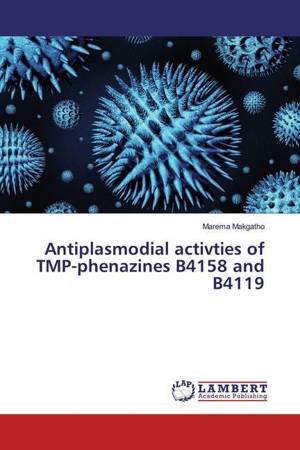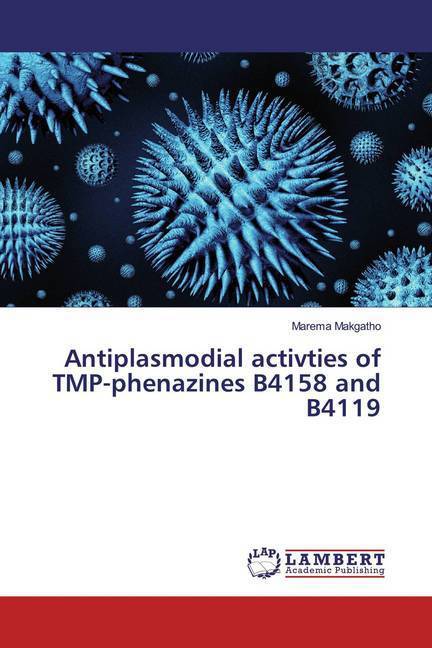
- Afhalen na 1 uur in een winkel met voorraad
- Gratis thuislevering in België vanaf € 30
- Ruim aanbod met 7 miljoen producten
- Afhalen na 1 uur in een winkel met voorraad
- Gratis thuislevering in België vanaf € 30
- Ruim aanbod met 7 miljoen producten
Zoeken
€ 70,95
+ 141 punten
Omschrijving
A novel flow cytometric procedure was established for use in evaluating the in vitro antimalarial activity oftetramethylpiperidine (TMP)- substituted phenazines. The flow cytometric procedure was compared with microscopy and radiometry for efficiency in quantitating the level of parasitemia in malaria cultures. The flow cytometric method compared well, as determined by the Bland and Altman measure of agreement, with both microscopy and radiometry and was chosen for use in this study due to its speed, precision and convenience (includes a fixing step that allows samples to be evaluated at anyone time). The TMP-substituted phenazines B4119 and B4158, synthetic derivatives of clofazimine, were evaluated extensively against a drug-sensitive and various drug-resistant lines ofPlasmodium jalciparum in vitro and against P. berghei in mice. Parasite growth was measured using microscopic and flow cytometric methods, while heme polymerization was investigated using an infrared spectroscopic procedure. The therapeutic potential of B4119 alone (30mg/kg/day), and in combination with a sub-therapeutic dose of chloroquine (l.251lg/kg/day) was measured in a murine model of experimental infection.
Specificaties
Betrokkenen
- Auteur(s):
- Uitgeverij:
Inhoud
- Aantal bladzijden:
- 184
- Taal:
- Engels
Eigenschappen
- Productcode (EAN):
- 9783330062535
- Uitvoering:
- Paperback
- Afmetingen:
- 150 mm x 220 mm

Alleen bij Standaard Boekhandel
+ 141 punten op je klantenkaart van Standaard Boekhandel
Beoordelingen
We publiceren alleen reviews die voldoen aan de voorwaarden voor reviews. Bekijk onze voorwaarden voor reviews.











